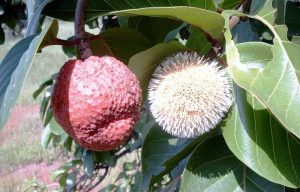With changing lifestyles, traditional medicines derived from roots, leaves and stems are now finding new audiences around the world. India, however, has been at the heart of this movement for centuries.
India is often called the botanical garden of the world. About 6,000 of the 45,000 known plant species in India are used in traditional medicine. According to the National Centre for Biological Sciences, the use of herbal medicine in India dates back to the 2nd millennium BC.
A stroll down the aisle of any supermarket will tell you about these super-ingredients, derived from roots, leaves or extracts of plants that heal “naturally”.
They are increasingly present in food and beauty products. Long before the Spice Route opened the West to the riches of India, travellers, philosophers and physicists were exploring its knowledge and advancing the understanding of health and medicine. Mentions of traditional Indian medicine can be found in the Charaka Samhita and Sushruta Samhita, the earliest known writings on Ayurveda, an alternative system of medicine with historical roots in the Indian subcontinent.
One of the world’s oldest systems of medicine, Ayurveda’s early writings focused on finding the origin of a disease in order to provide a holistic cure based on the elements that were believed to have created the balance for a healthy human body. This remains the basis of Ayurveda’s healing process to this day. While Ayurveda’s prominence in ancient Indian medical history is due to the growth of trade and cultural influences, the region also witnessed the practice of Unani, Sidha and Sa-Rigpa, which influenced and were influenced by the Ayurvedic philosophy.
Unani has its origins in the school of thought of Hippocrates in ancient Greece. And like Ayurveda, Unani emphasises the balance created by the harmony of certain physiological elements in our bodies.
The use of medicinal plants is found in Indian mythological texts, including the Ramayana. In the final days of the war against Ravana, Hanumana was asked to find the Sanjeevani herb to bring the injured Lakshmana back to life. However, botanists were not yet convinced that a plant could have life-saving properties. Traditional medicine still uses thousands of plants for healing. For example, aloe vera, now increasingly used in cosmetics, has long been considered a medicinal plant in Ayurveda for its ability to heal burns, condition the skin and even treat liver diseases such as jaundice. Cinnamon is used extensively in Indian cuisine, not only as a spice to add flavour but also to aid digestion.
The neem tree has also been used extensively for medicinal purposes in India. Known for its antiseptic and antiviral properties, it has been used to maintain personal and community health and in organic farming.
India’s tribal people have been practicing and relying on herbal medicine since time immemorial. In fact, their knowledge of plants and their properties played an important role in early medical texts such as the Charaka Samhita.
Several studies carried out in the western Himalayas show that, in the absence of medical infrastructure, local people used plants to treat ailments such as eye problems, joint pain, kidney stones and even urinary tract infections.
A study, Traditional Use Of Medicinal Plants Among The Tribal Communities of Chhota Bhangal, Western Himalayas, reveals that 35 species of plants are used by the community to treat common ailments. Most of this knowledge has been passed down through generations by word of mouth. A wide variety of medicinal plants are part of everyday life in India.
While using them as ingredients in cooking is one way that our diverse communities have managed to incorporate medicinal plants, they also have an important place in beauty therapies. Henna and shikakai have been used in the subcontinent to dye hair and make it shinier.
Amla, a rich source of vitamin C, has been used in hair products for its ability to strengthen hair roots. Similarly, orange and cucumber have long been used in face packs for their natural ability to remove wrinkles. Rose water and oil are important ingredients in beauty products for their anti-inflammatory properties.
It is therefore not difficult to see why a number of modern cosmetic products are harnessing the power of natural herbs. Understanding their medicinal properties can help us not only to use them better in their original form, but also to choose the right products from the shelf. (Lakshmi Balakrishnan) – (Photo: Pixabay)







